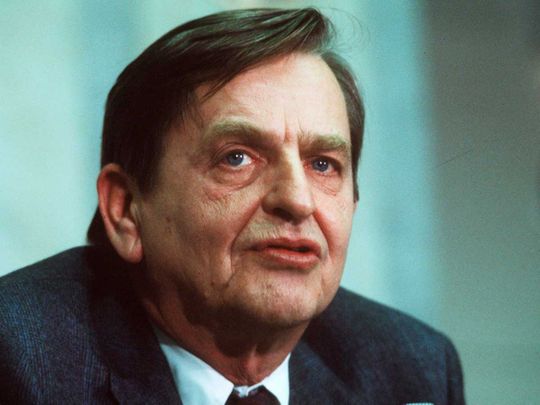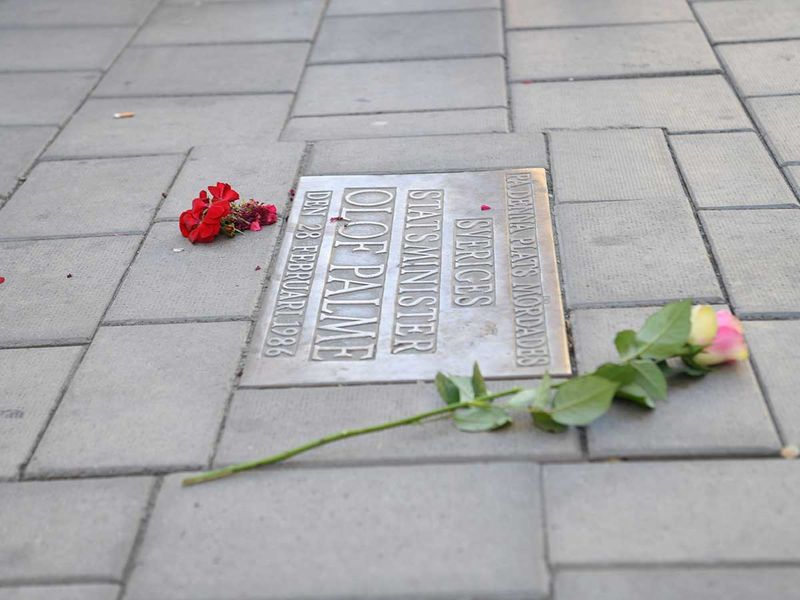
Stockholm: Stig Engstrom, a graphic designer, was the man who shot dead Swedish Prime Minister Olof Palme in 1986, prosecutor Krister Petersson said on Wednesday, closing the case that has haunted Sweden for decades.
“The person is Stig Engstrom,” Petersson told a news conference. “Because the person is dead, I cannot bring charges against him and have decided to close the investigation.” Engstrom died in 2000.
Palme was shot dead in central Stockholm in 1986 after a visit to the cinema with his wife and son. The murder sparked a massive manhunt and a plethora of conspiracy theories involving shadowy forces ranging from the CIA and Kurdish separatists to the South African security services.
While a petty criminal was convicted of Palme’s killing, the judgement was later overturned and the police’s failure to identify the culprit has left a scar on the psyche of a country that still prides itself on how safe it is to walk its streets.
Palme was prime minister between 1969 and 1976 and between 1982 and 1986. Some hail him as the architect of modern Sweden, while conservatives hated his anti-colonial views and criticism of the United States.
Who was Engstrom?
Petersson said Engstrom, also known as the Skandiamannen for working in the nearby Skandia insurance company, had a strong dislike of Palme and his policies. He was one of the first at the murder scene and was briefly considered a possible suspect.

Several other witnesses gave descriptions of the fleeing killer that matched Engstrom while others said he wasn't even at the scene. Engstrom himself claimed to have been present from the beginning, spoke to Lisbet Palme and police, and attempted to resuscitate the victim.
Soon after the murder, Engstrom appeared in Swedish media and developed an increasingly detailed story of his involvement in the events and criticised the police. He claimed those witnesses who had described the killer had in fact been describing him, running to catch up with police officers in pursuit of the assassin.
The police then labelled Engstrom as a unreliable and inconsistent witness and classified him as a person of no interest.
What happened to Palme?
Palme was killed on February 28, 1986, after leaving a Stockholm cinema with his wife Lisbet to walk home, having dismissed his bodyguards for the evening.
An unidentified attacker shot Palme in the back and fled, leaving the 59-year-old dying in a pool of blood on the sidewalk.
More than 10,000 people have been questioned over the years.
Palme sought to live as ordinary a life as possible and would often go out without any bodyguards.
Lisbet Palme was injured in the attack and later identified the shooter as Christer Pettersson, an alcoholic and drug addict, who was convicted of Palme's murder. The sentence was later overturned after police failed to produce any technical evidence against him, leaving the murder an unsolved mystery. Pettersson died in 2004.
Palme, who cut a flamboyant, even boyish figure, had an aristocratic background but was known for his left-leaning views. He was eyed with suspicion in conservative circles and by the United States. Among Swedes and in the Nordic region, he was much loved, but also hated.
Who were the suspects?
More than 100 people have been suspected of the crime and the unsolved case has been surrounded by conspiracy theories, ranging from foreign involvement, people with right-wing sympathies within Sweden's police, to an act by a lone shooter.








